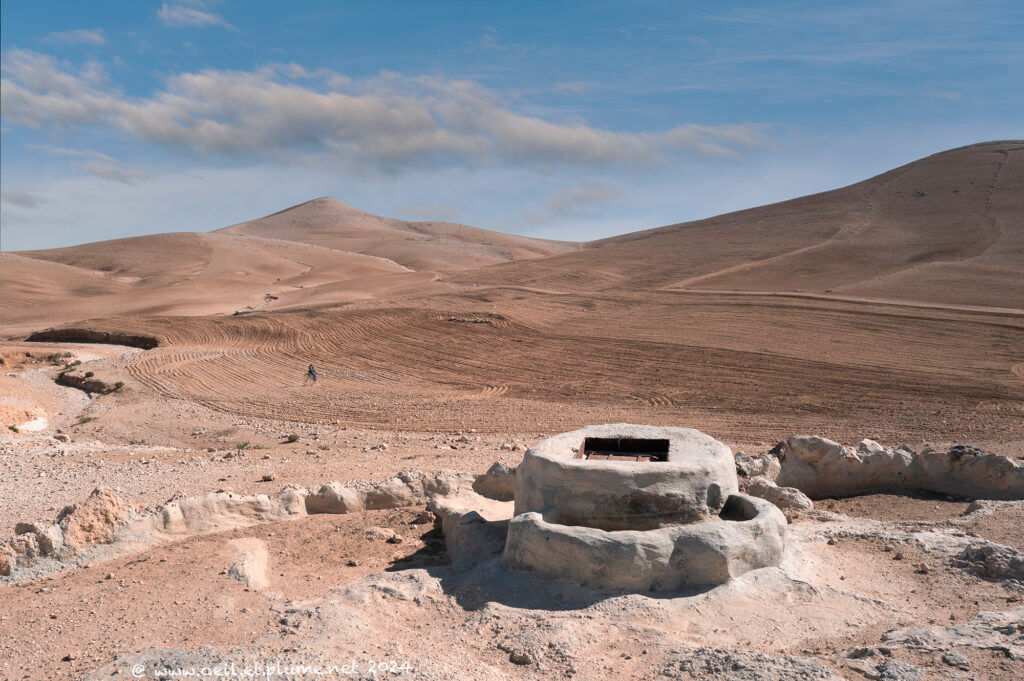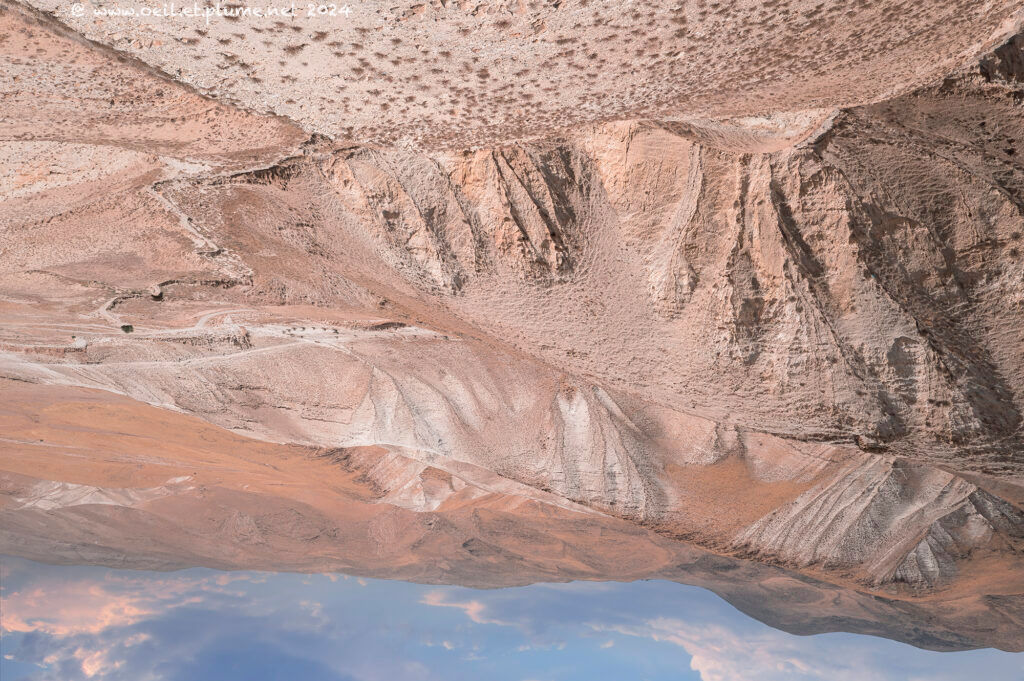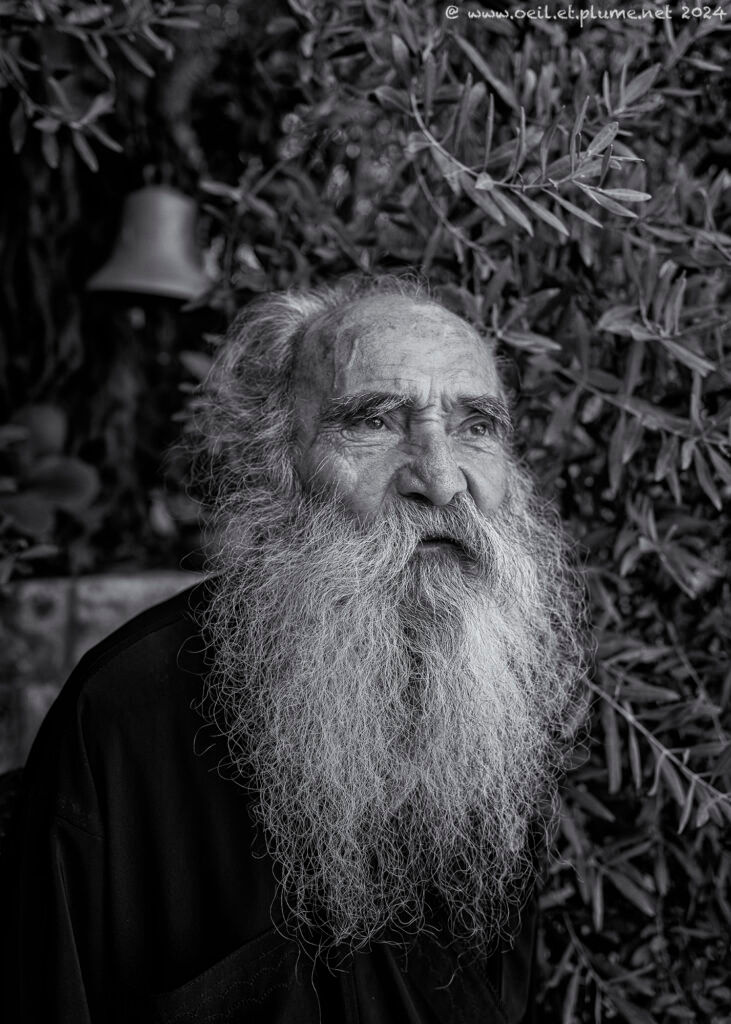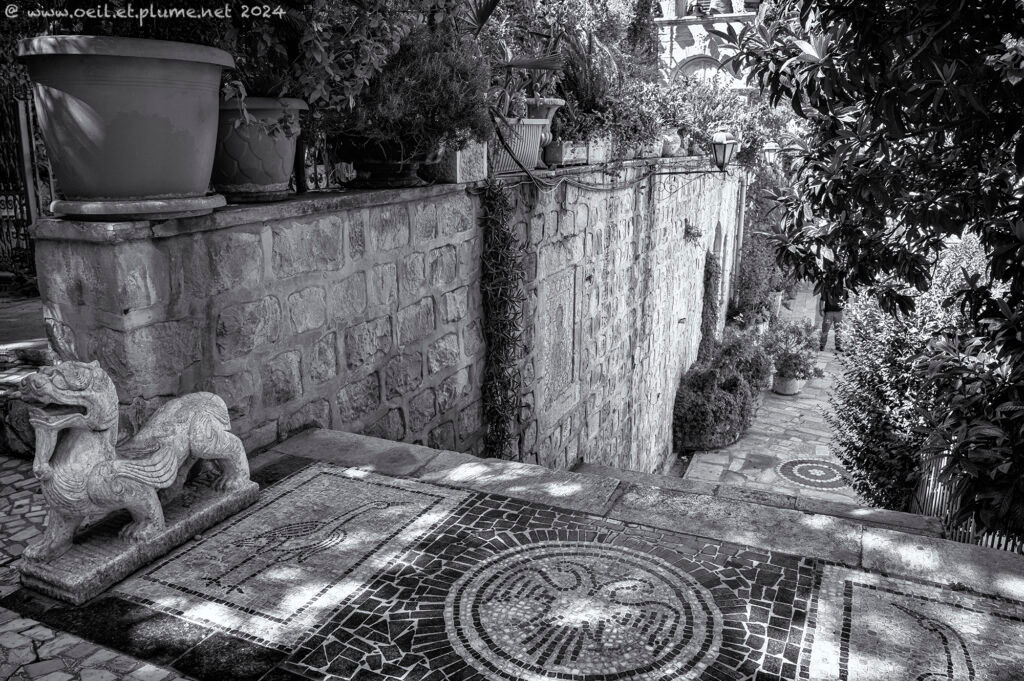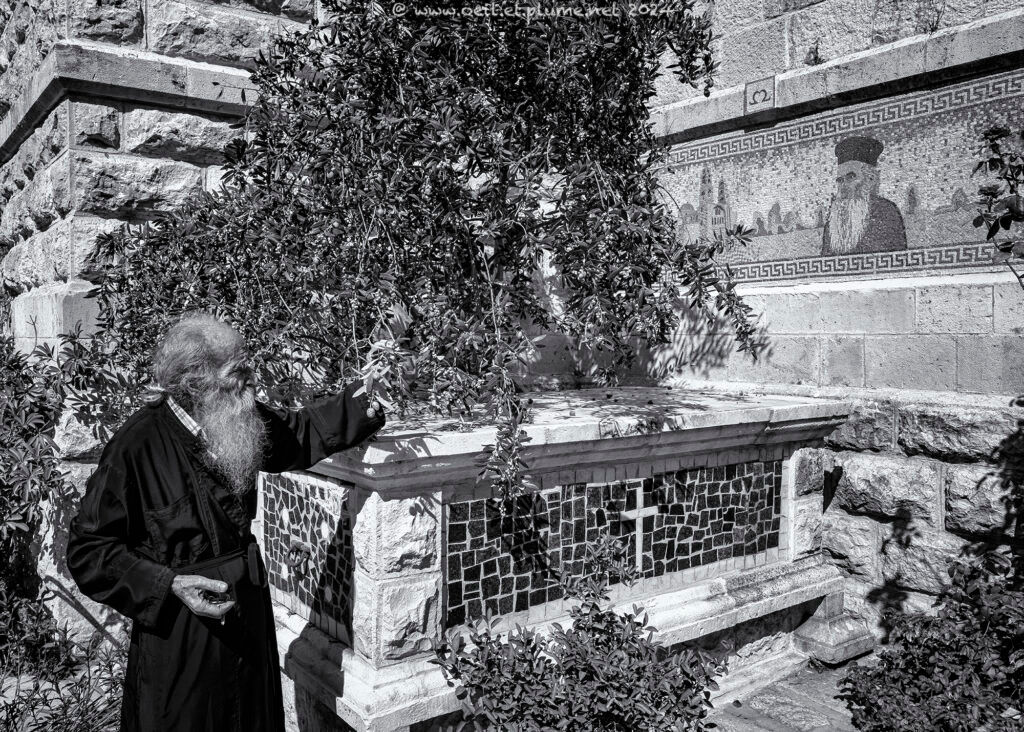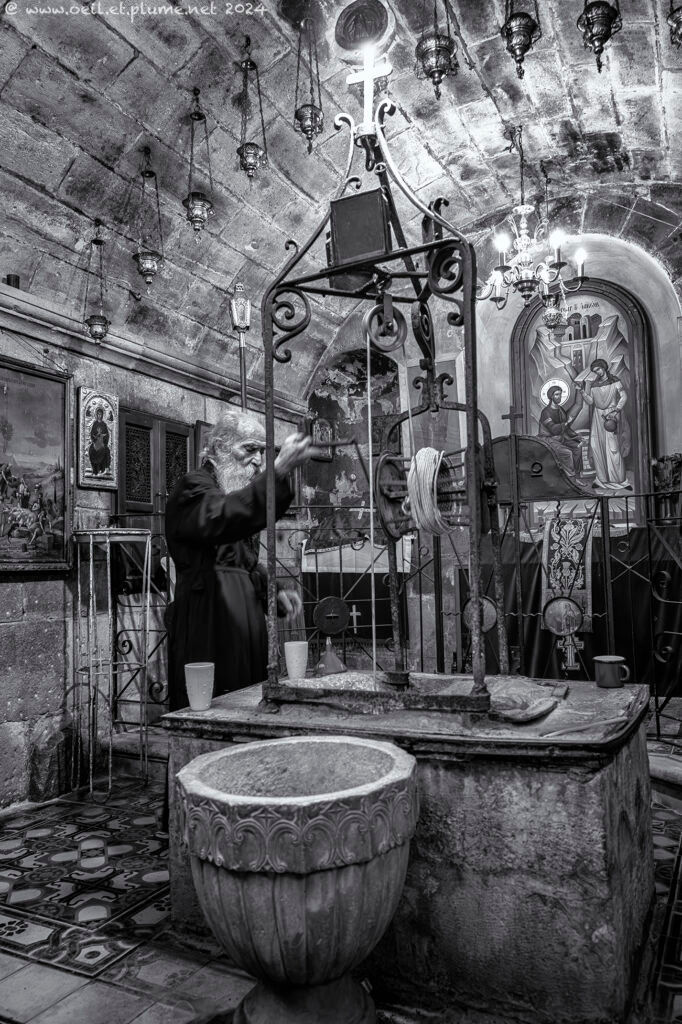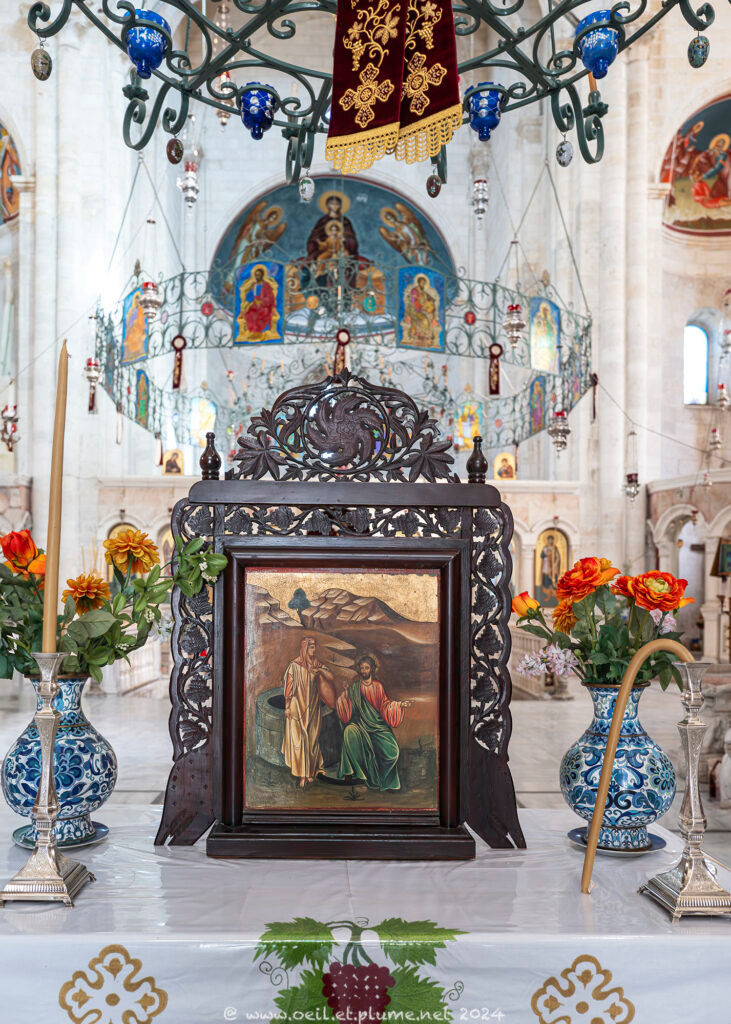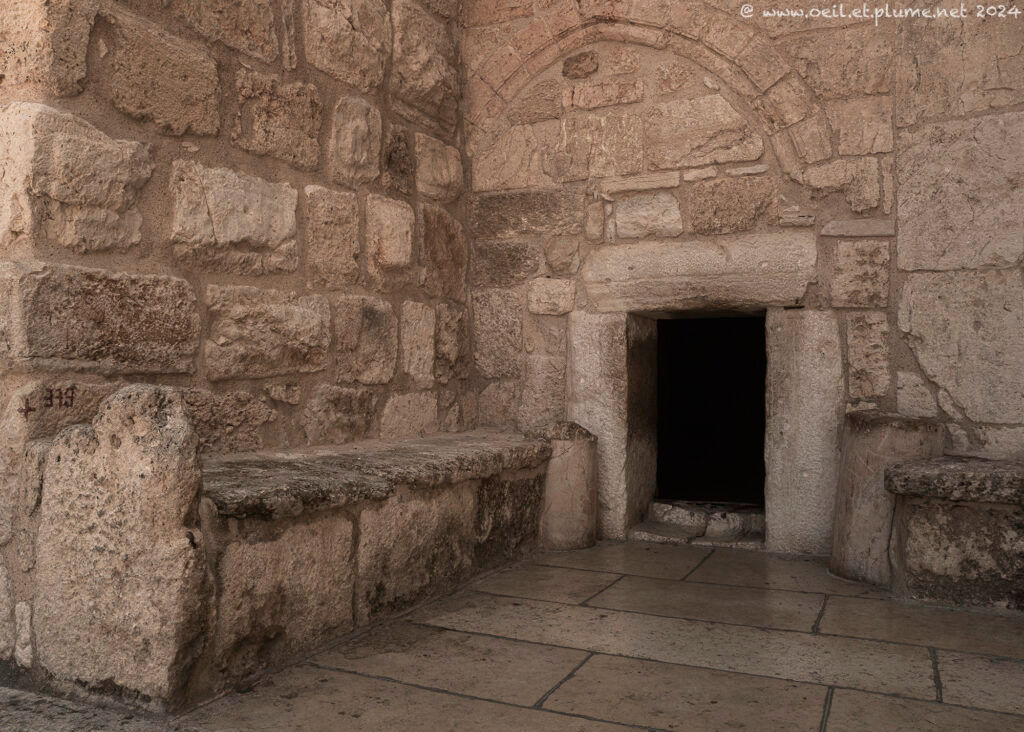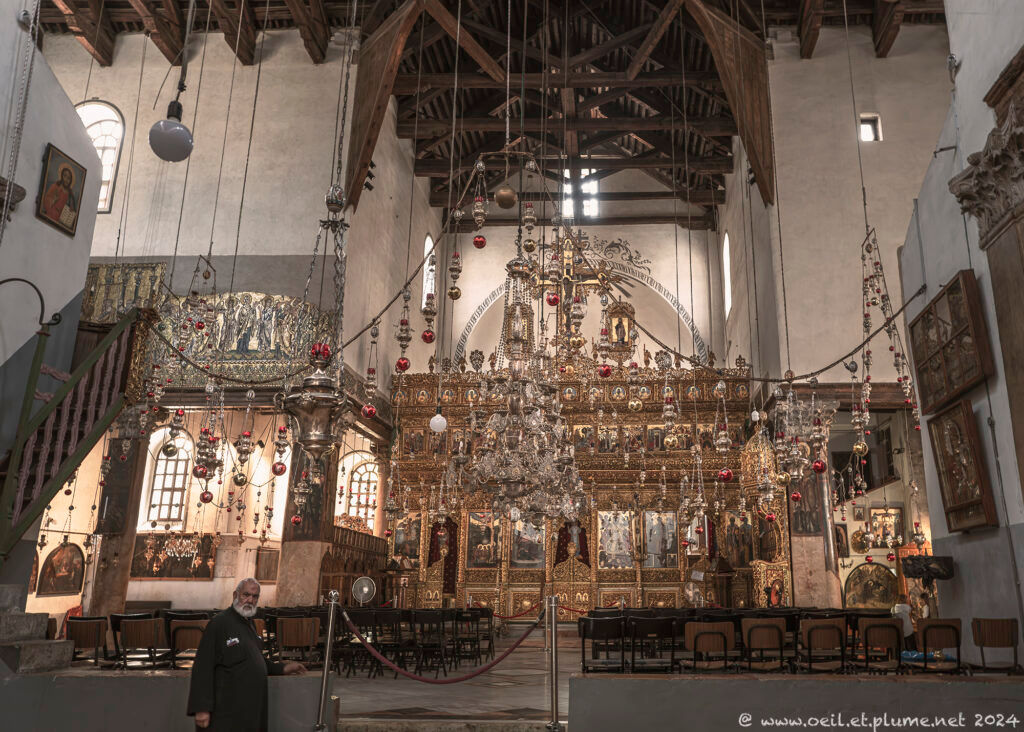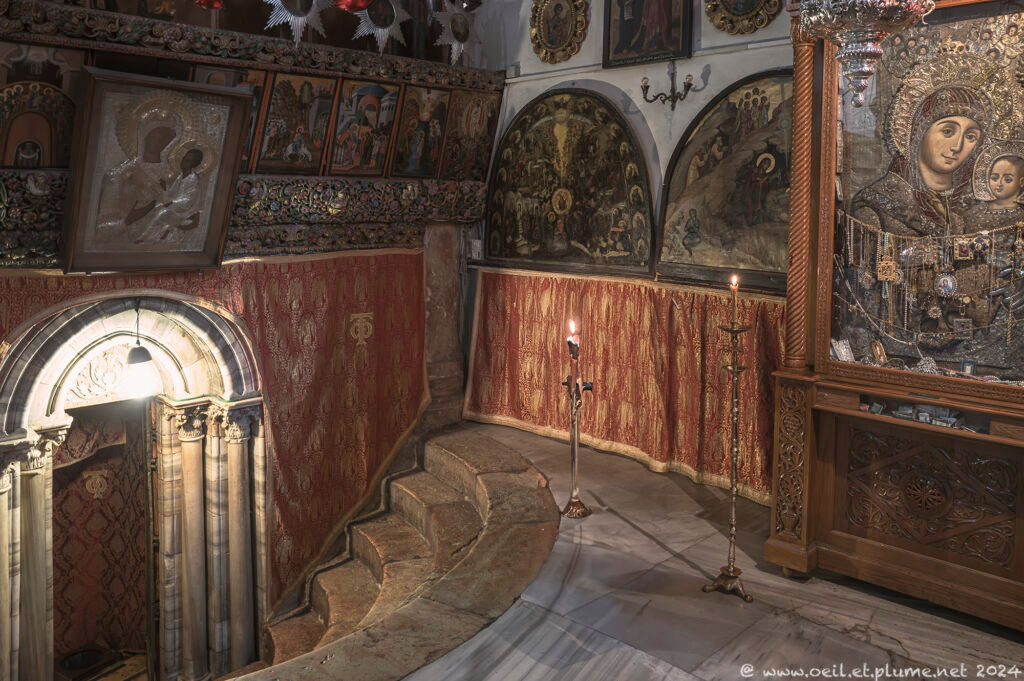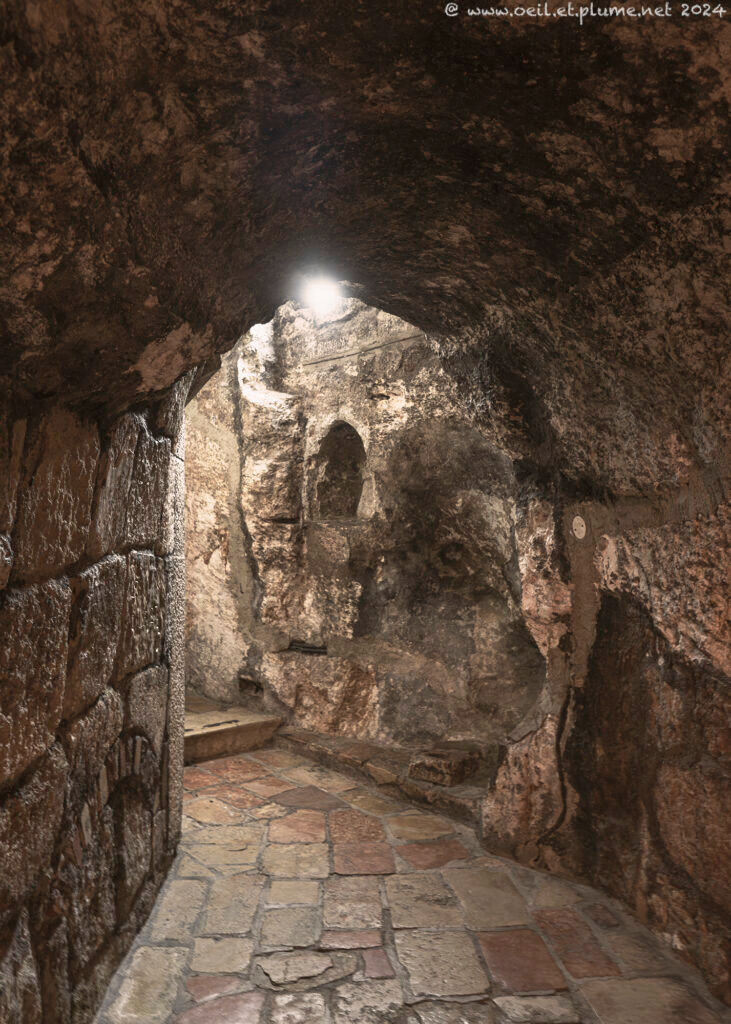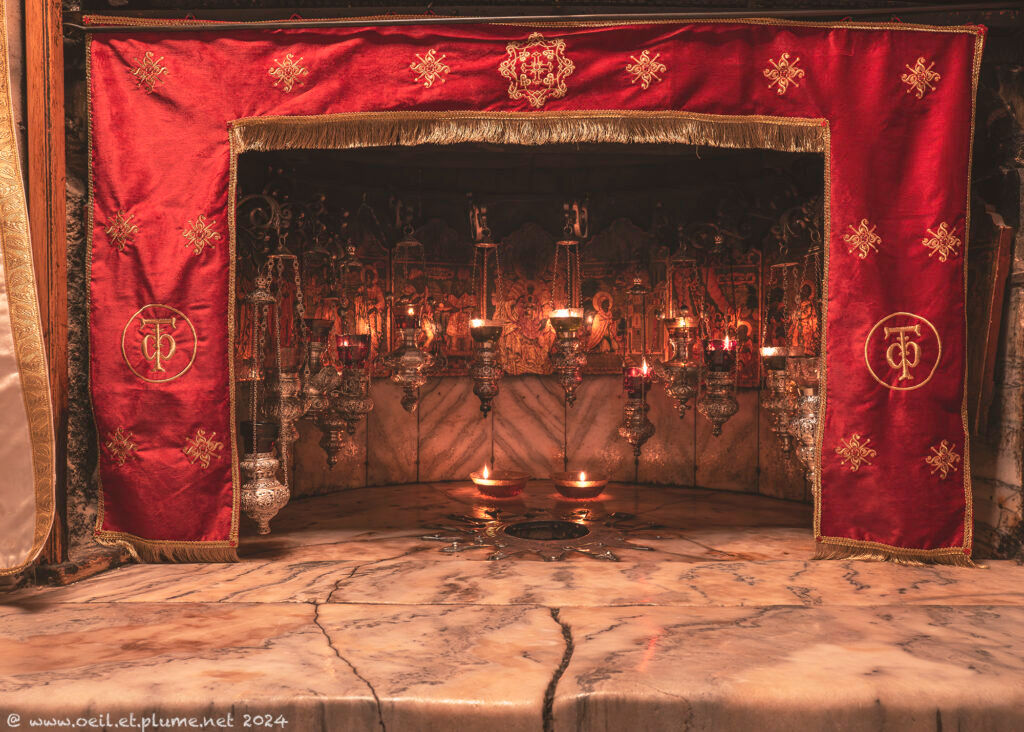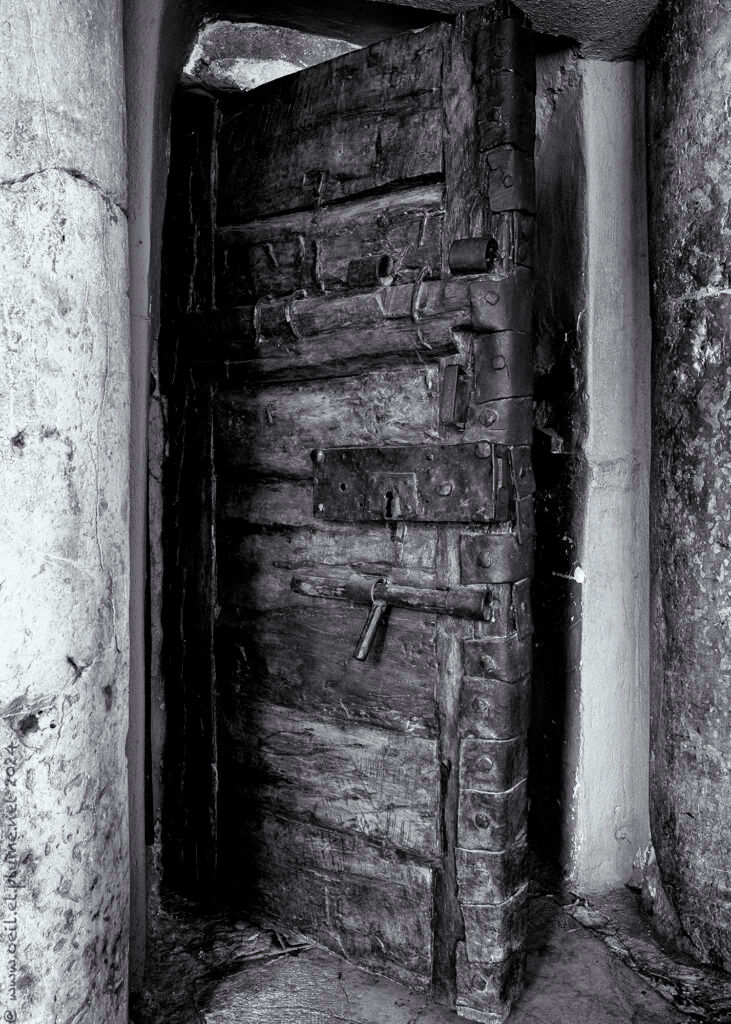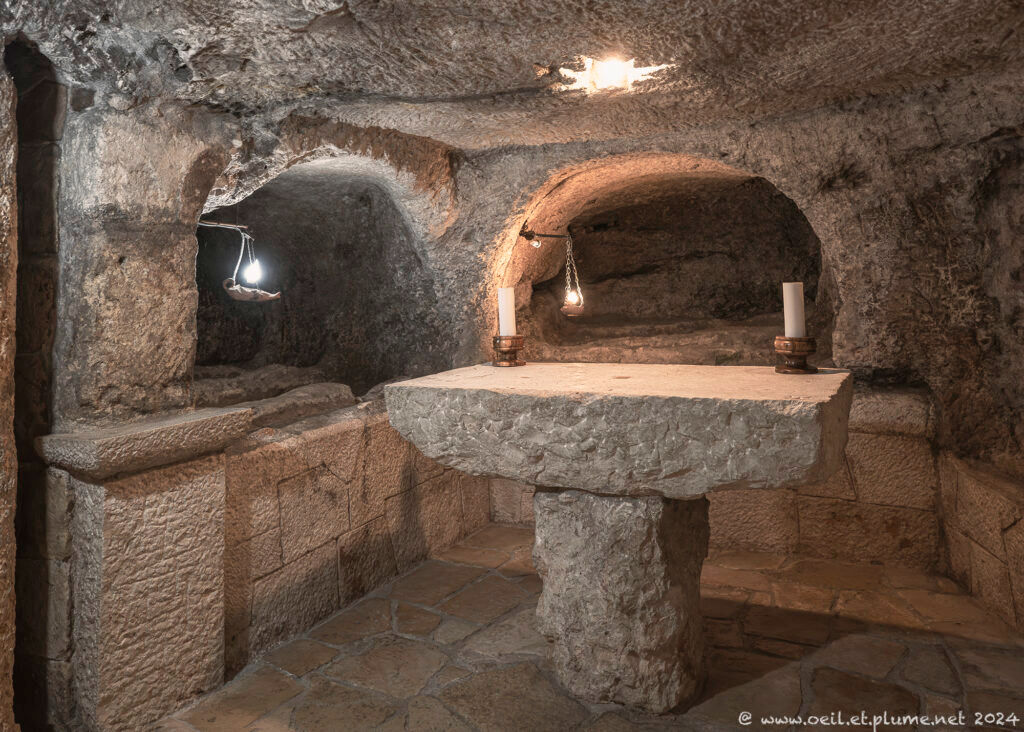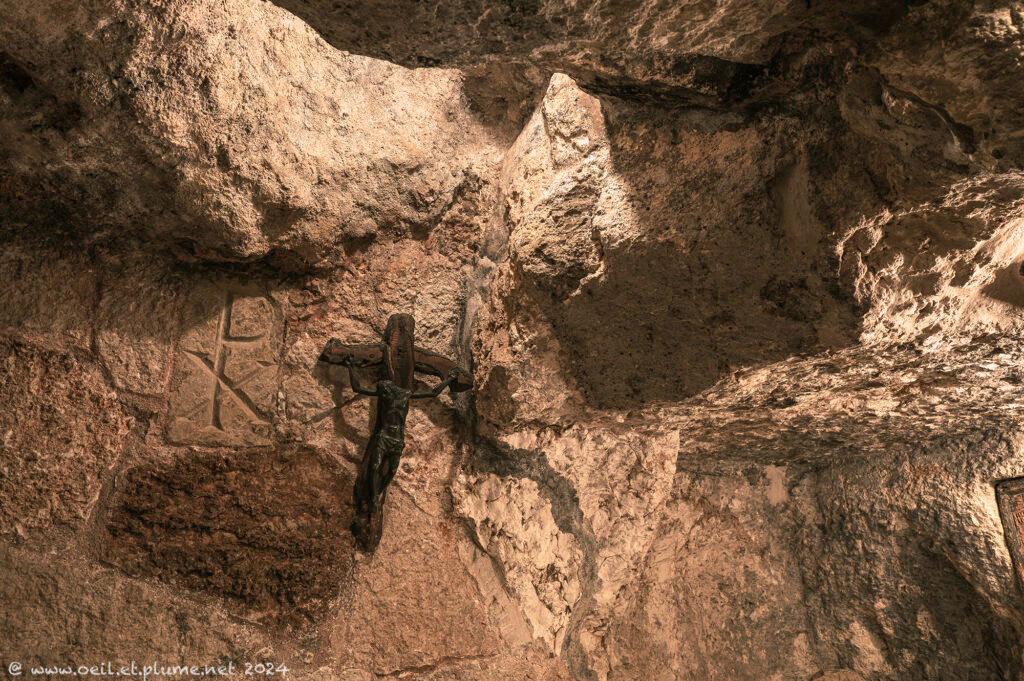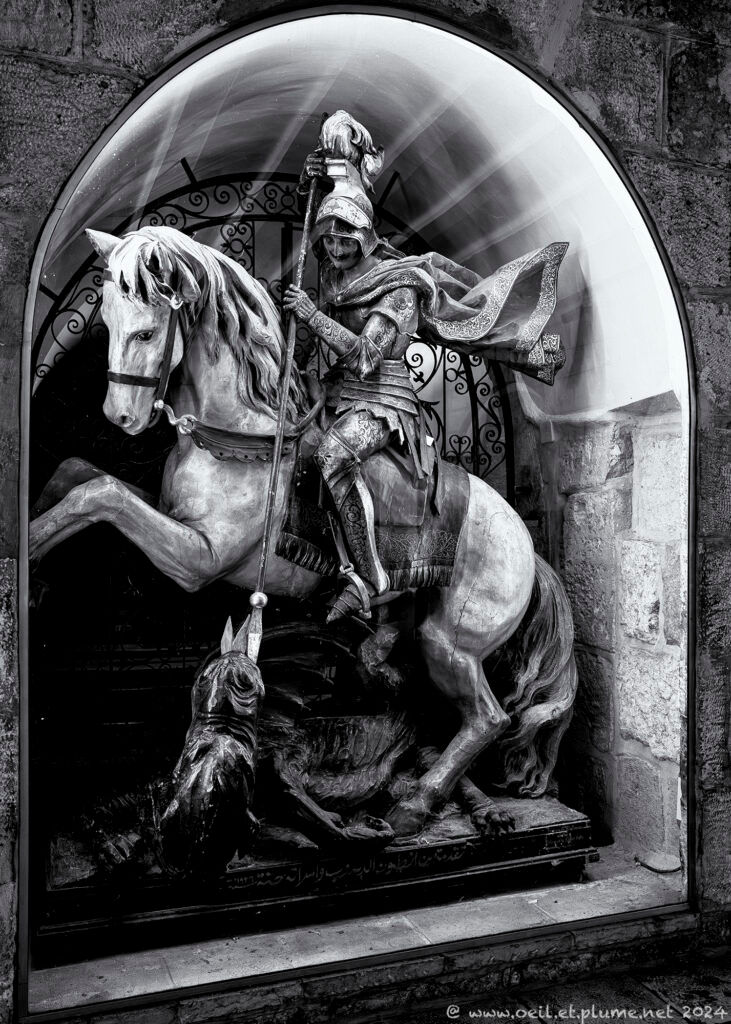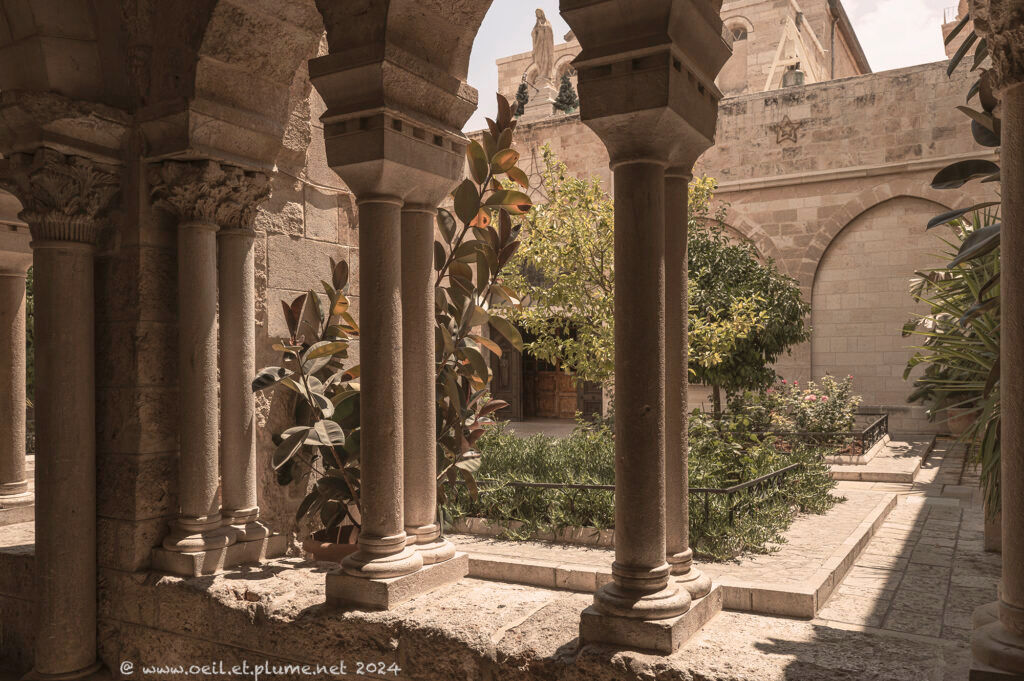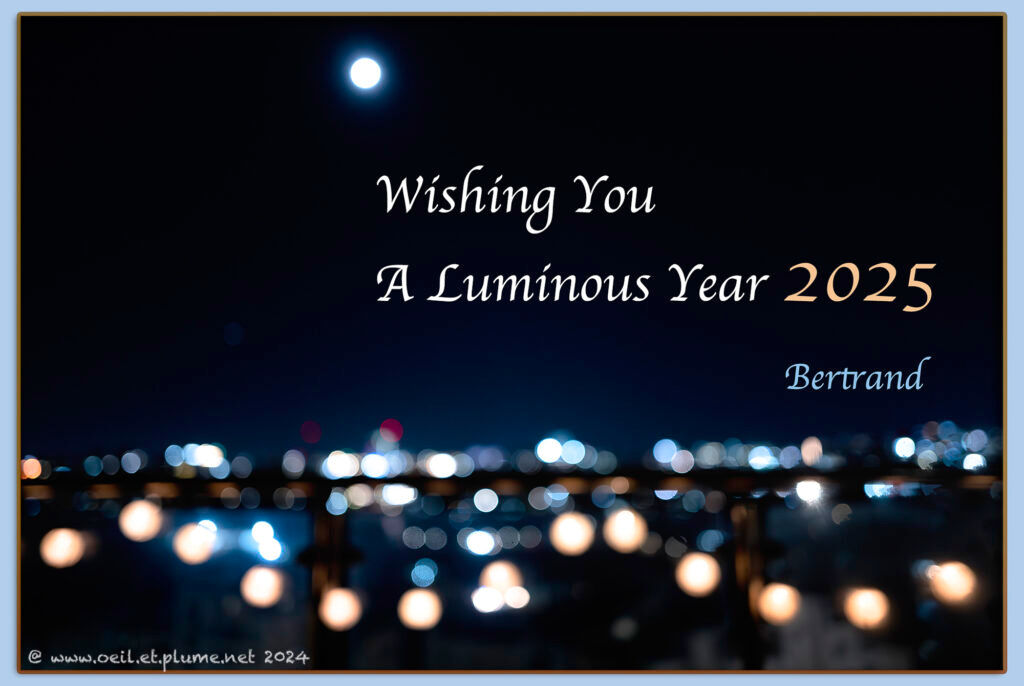Water and light constitute two essential elements of our ecosystems and to any form of life. The West Bank counts on plenty of light and far less water, situation that shapes lifestyles and livelihood means. Water and light also entail spiritual resonance – what the present essay is mainly about.
Water – Jacob’s Well
The Jacob’s Well or Jacob’s Fountain, is enshrined in an Greek Orthodox church and monastery located in the periphery of Nablus in Northern West Bank. It is named after the biblical patriarch Jacob who lived there more than 2.000 years ago. Christian, Muslim, Samaritan and Jewish traditions associate the well with the patriarch Jacob.
According to the holy scripts, the ancient water hole was dug by the patriarch Jacob in a location named then Sychar. Jacob’s Well is where Jesus asked a Samaritan woman named Photini for water and offered her “living water”. As God is “the spring of living water”, Photini was enlightened by her conversation with Jesus. She devoted the rest of her life to her new faith until her violent death ordered by a Roman emperor.
Archimandrite Ioustinos, locally known as Abu Ioustinos, is a venerable Greek Orthodox priest and the lifelong position of caretaker of Jacob’s Well since 1980. Born on the mythical island of Ikaria in Greece, he spent most of his life in the West Bank.
Various churches have been successively built near the Jacob’s Well starting from the 5th century AD. They suffered from several major man-made or natural disasters across the centuries. In 1927, an earthquake destroyed the Greek Orthodox Photini church. Father Ioustinos spearheaded a major reconstruction project in the 1980’s. Jacob’s Well has since been restored and a new church modelled to incorporate the ancient water hole in an underground crypt.
Abu Ioustinos is a deeply dedicated and talented individual, blending artistic skill with spiritual devotion. He created the murals and the stone mosaics inside the church. He also crafted his own burial site topped with his portrait mosaic – a testament to his profound connection to his faith and his craft. Despite all difficulties faced in his functions since decades, father Ioustinos feels blessed to be the caretaker of a sacred water source.
Light – Grotto of the Nativity
The grotto of the Nativity is another holy place in the West Bank where enlightenment is looked for. Located underneath the basilica of the Nativity in Bethlehem, the grotto holds a prominent religious significance to Christians as the birth place of Jesus. It constitutes the oldest site continuously used as a place of Christian worship, while the basilica is the oldest major church in the Holy Land. Regardless of faith and beliefs, a visit there represents a very strong experience.
Commissioned by the Roman Emperor Constantine, the first church of the Nativity was built in the 4th century. Two centuries later, a new basilica was erected by the Byzantine Emperor Justinian. The design of Church of the Nativity remained fundamentally unchanged since that period, except for multiple repairs and additions carried out eventually. The religious infrastructure is run by the Catholic, Armenian Apostolic and Greek Orthodox churches. Their respective rights and duties are regulated formally by a 19th century agreement.
As the Jacob’s Well, the grotto of the Nativity is enshrined underground. Catholics are in charge of a section of the grotto known as the “Grotto of the Manger”.
In a room of modest dimension, a humble marble altar. Set in the altar ground plate, a 14-pointed silver star marks the spot where Jesus is believed to be born. In the middle of the star, a circular hole allows reaching what is said to be the original stone that Mary laid on when she gave birth. The front part of the marble ground plate is not only polished but also sculpted and broken by millions of pilgrims who have kneeled there since ages, in sign of devotion.
Even more than the grotto, the cave chapels located in a maze of underground catacomb galleries irradiate a strong energy propitious to enlighten one’s soul. I stay there for long time, immersing myself in the atmosphere, imagining historical pieces and fostering my mental balance. People often wish that life would be better if stones could talk. Stones do talk here.
Returning to ground level, I barely pay attention to the beautiful architectural pieces surrounding the basilica of the Nativity. Never mind, the beauty does not necessarily lay in the aesthetic.
Season’s greetings
As the end-of-year celebrations are approaching, it is time to bank on the water and the light gathered in this essay to wish you all the best in the year to come. Our world direly needs enlightenment to achieve peace and prosperity.
From my balcony somewhere in the West Bank, I gaze at urban lights shining in a crystal-clear sky. Urban lights gradually blur to give room to the bright moon light. Enlightenment is there and will prevail.
Cheers,
